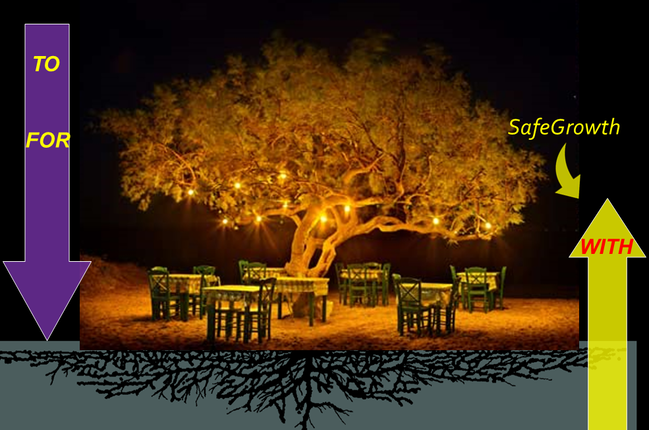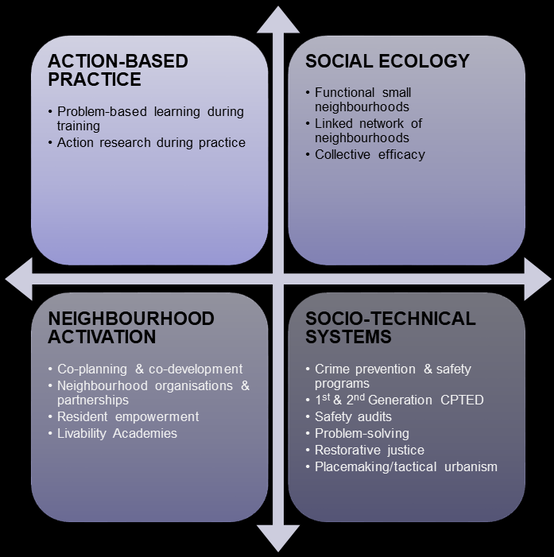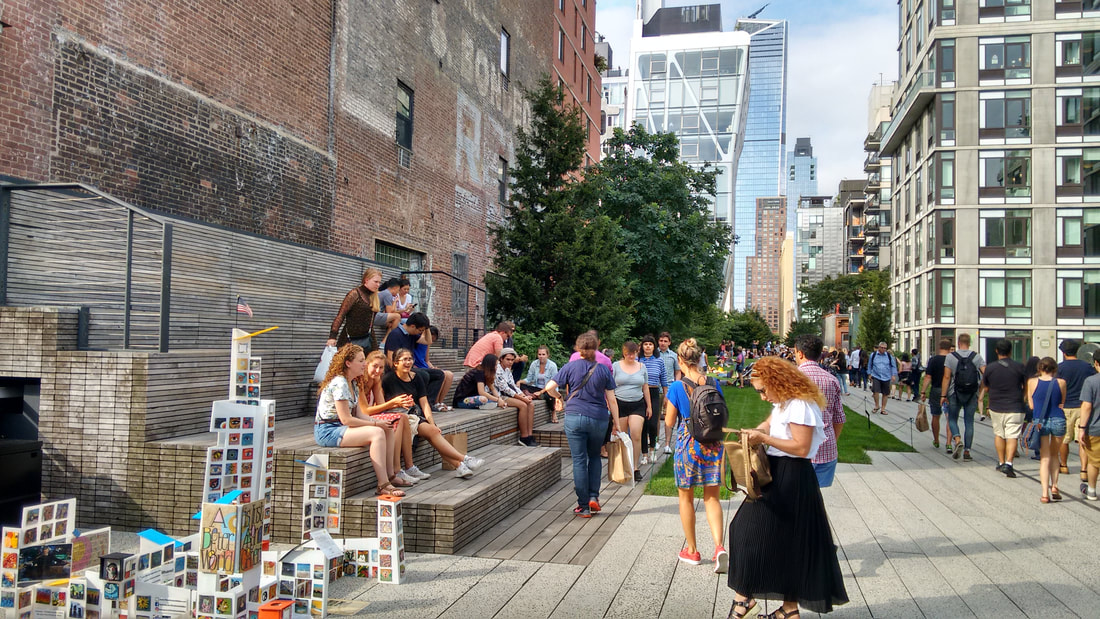SAFEGROWTH® HISTORYSafeGrowth was developed by Gregory Saville and launched in June, 2007 Canadian Institute of Planners annual convention in Quebec City, Canada.
Since 2007 the SafeGrowth® method has been adopted in neighborhoods across North America, New Zealand, Australia and Europe. |
|
METHOD & PHILOSOPHYSafeGrowth® is a philosophy built on the belief that healthy and functioning small neighborhoods provide the most sane, healthy, and safest way to build cities in the 21st Century.
The TO-FOR-WITH is the underlying principle of SafeGrowth® philosophy meaning local residents and local community need to play a key role in neighborhood safety planning and livability efforts. |
THEORYSafeGrowth theory is built around the 4 principles (tenets) that are the foundation for SafeGrowth method and practice:
1. ACTION BASED PRACTICE 2. SOCIAL ECOLOGY 3. NEIGHBORHOOD ACTIVATION 4. SOCIO-TECHNICAL SYSTEMS When these principles work synergistically they contribute towards creating a vision of livable neighborhoods and cities in 21st Century. |
WHAT MAKES GREAT NEIGHBORHOODS?SafeGrowth® operates at a NEIGHBORHOOD level. The residents deserve to live in safe & livable - great neighborhoods.
Great neighborhoods are not great by coincidence. They are great because they are safe and they offer opportunities for creativity, diversity & mobility. Neighborhoods become great because people there care for one another & participate in community life. |



